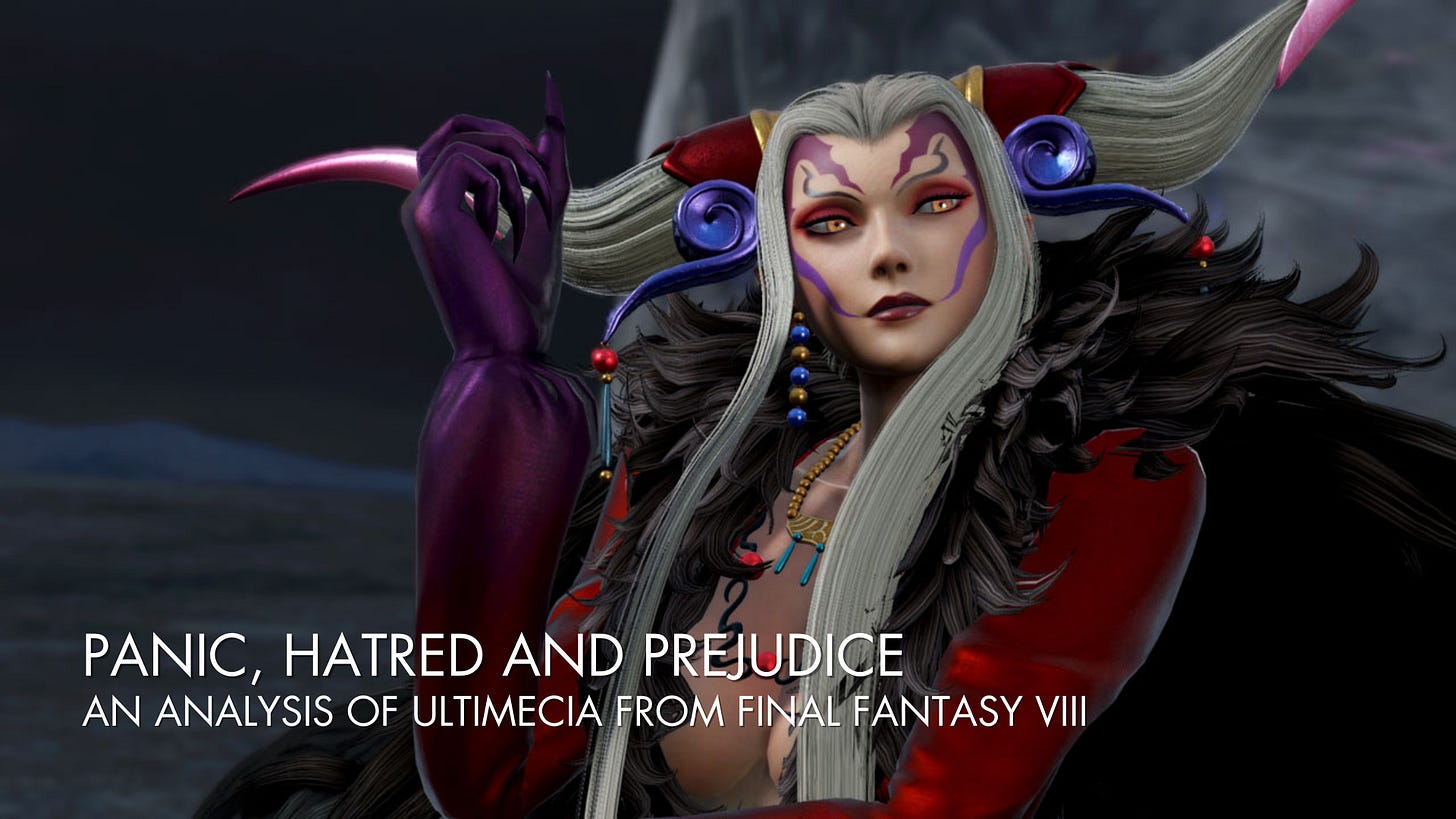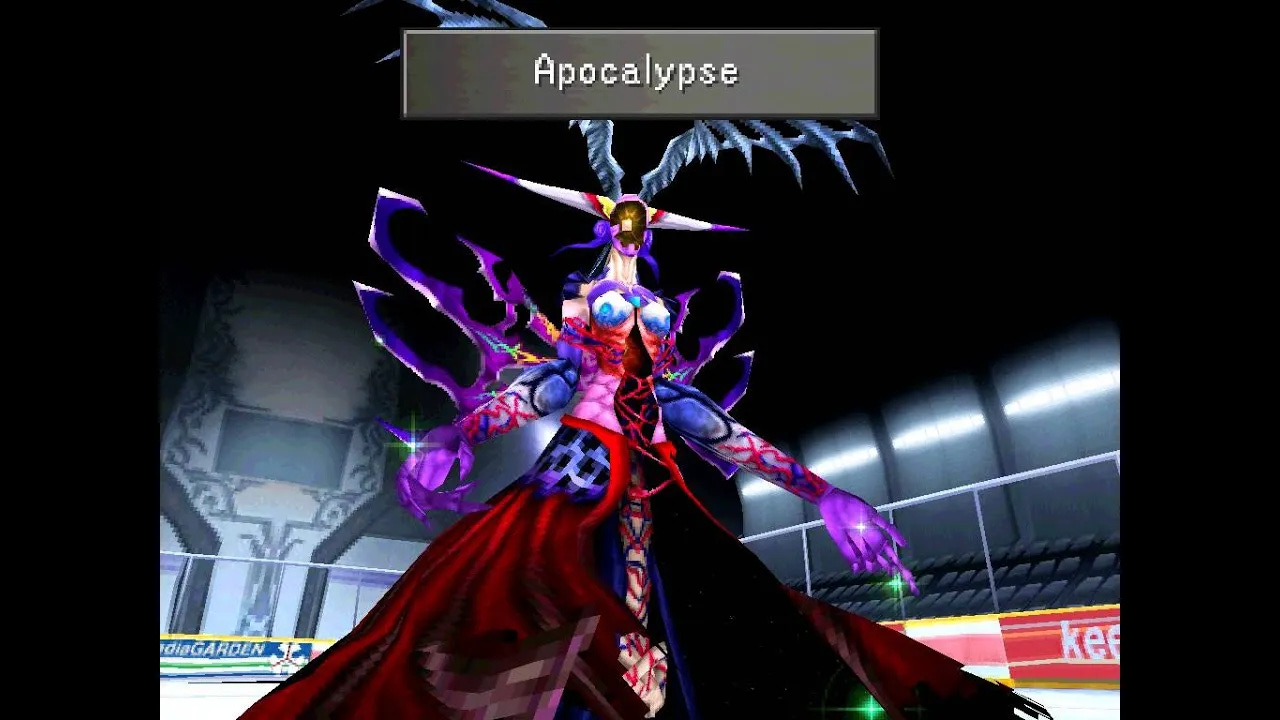At the beginning of my journey into the world of video game RPGs—around the tender age of nine—I started dedicating a lot of time to my PS1, which I received as a Children's Day gift after my parents spent their hard-earned money on it.
Life was good. I played games I didn’t understand a thing about, like the classic Chrono Trigger, the acclaimed Final Fantasy VII, and the excellent Breath of Fire IV—but all these electronic gems entertained me immensely.
A little later, still without knowing enough English to understand things properly, I had my first encounter with Final Fantasy VIII: a game that, at first, I thought was a direct sequel to VII, given the numerical progression.
However, when I started a New Game, I was surprised in many ways. The graphics were far superior to the previous game, the characters were different, and even the battle system worked differently.
My reaction was pure joy, because that’s exactly what I wanted—to explore novel places and new mechanics; and FFVIII had it all.
Somehow (which I still don’t understand to this day), I managed to finish the game. Four discs filled with intense battles, a moving train invasion, a trip to space, and an epic battle inside a castle that looked straight out of a horror movie.
It was amazing how a single game allowed me to experience so many different environments and adventures. Today, I can say with absolute certainty that FFVIII was the game that got me deeply hooked on RPGs.
This year (2019), FFVIII turned twenty since its release. Square, the game's developer, didn’t even bother to pay tribute to one of its greatest works.
Fans of the franchise often say that VIII is one of the weakest Final Fantasy games in terms of story, with one of the most nonsensical villains, and the worst battle/gameplay system ever (Junction).
Put all that together, and you’ll see why fresh players of the franchise often overlook VIII, or if they do play it, their opinions are distorted by old-school fans who loudly proclaim that VII is the best of all.
The goal here isn’t to determine which Final Fantasy is the best, nor to go on endlessly explaining the game’s story—I’ll save that for another article.
What I want to address right now is a specific topic, one of the main points of attack from the haters: Ultimecia, the villain, the Sorceress, the executioner of Squall and his friends.
The biggest problem with FFVIII is that you’ll never fully understand its story without playing it at least twice. Its plot is deeply intertwined, filled with ambiguous events and dialogue that only connect near the end.
Because of this, we often miss key elements like: Who is Ultimecia? Why did she want to compress time?
And after multiple playthroughs, to pay tribute to this incredible game, I want to show that this villain isn’t just a 3D model with a few lines of dialogue and five final battle forms—she is a victim.
A victim of herself.
Eyes on Myself:
As soon as we defeat Ultimecia in one of the most epic final battles of the franchise (with a memorable soundtrack—click here to listen), we see that Squall ends up traveling back in time along with the sorceress. There, he discovers that before dying, she passes her powers to Edea, the caretaker of the orphanage where Squall and his entire group of friends just so happened to grow up.
This reveals how Edea acquired her sorceress powers and helps us understand that everything is destined to repeat in an endless cycle.
Edea and her husband, Cid, will once again create the military force known as SeeD, so that Squall can train, become a fighter, and ultimately face a sorceress from the future to prevent her from achieving Time Compression.
Then, Ultimecia will be defeated, sent back to the past, and once again transfer her powers to Edea, who, in turn, will create SeeD with her husband once more.
The cycle repeats, repeats, and repeats…
But why does she keep doing the same things, even knowing the outcome?
We need to go further back to the root of the situation.
Rinoa, after inheriting the powers of Adel—the sorceress of Esthar who was imprisoned on the moon—becomes, theoretically, the only living sorceress in the present time. Of course, this doesn’t mean that she is Ultimecia (and, for the record, this article does NOT support the R=U theory), but rather that at some point, she will die and must pass her powers to another woman. This successor, in turn, will also eventually die and transfer her powers to yet another person.
Now, imagine this: all the major world leaders, Squall’s team, and others are aware that, at some point in the future, a successor to Rinoa’s powers will rebel and become Ultimecia. With this knowledge, they would likely start monitoring Sorceress Powers, trying to ensure that only good-hearted individuals inherit them—doing everything possible to prevent the feared villain’s rise.
However, due to human nature, we can also assume that these good intentions will eventually become distorted over time. Some leaders will think that the current sorceress isn’t Ultimecia and will decide to use her as a weapon of war—or even as a prisoner.
"Fear is never in the danger itself, but in us."
— Stendhal
And just like the quote above, Final Fantasy VIII is precisely about this. The fear that Ultimecia could appear at any moment to bring chaos is so overwhelming that people fall into panic.
No one would ever name their daughter Ultimecia. Such a name would be something horrific, an unbearable burden for anyone. Now, imagine the life that Rinoa’s successor will have to endure…
A life of isolation, sadness, and humiliation. Now imagine the sorceress after her, and the one after that… The further we move from the girl who helped save the world, the closer we get to the woman who wants to compress time into a single moment. We move closer to the end.
The fear is within us, and because of it, we commit terrible acts—one of them being the creation of the very danger we supposedly fear.
Edea, possessed by Ultimecia, says the following words in her speech in Deling City:
“…Poor… pathetic, shameful wretches. How can you celebrate my ascension with such joy? You cheer for the very thing you have condemned for generations. Have you no shame? What happened to the wicked, cruel sorceress of your nightmares? The cold-blooded tyrant who massacred countless men and destroyed many nations? Where is she now? She stands before your very eyes, about to become your new ruler.
HAHAHAHAHA!
A new age has begun. This is reality. There is no one to save you. Sit back and enjoy the show. Don’t worry, you fools. Your time has come. This is only the beginning. We shall usher in a new reign of terror. I will let you live a fantasy beyond your imagination.”
Take a moment to analyze this—I’ll give you some time before continuing.
I remember that when I carefully read this speech, a chilling sensation ran down my spine. Ultimecia wasn’t talking about Adel, or any of the previous sorceresses before Squall’s time—she was talking about herself.
The woman who, at some point, inherited the Sorceress’ Powers after Rinoa must have endured a level of hatred greater than any individual had ever faced in human history—after all, what if she became Ultimecia?
And as Stendhal says, fear is within us. That fear turned into hatred and prejudice, striking the new generations of sorceresses with full force. Perhaps, at some point, these women were tortured, abused… and then, one of them finally said: ENOUGH.
From this, we can conclude that no one was born Ultimecia—but someone became the most feared sorceress. Desperate for it all to end, this woman decided to embrace the role and fulfill, as she herself states in her speech, the fantasies of society.
If they wanted an Ultimecia so badly—then they would get one.
BUT NO ONE TO SEE ME
We have seen that, after a series of horrible events, the woman who inherited the Sorceress’ Powers wanted to put an end to all her suffering. She decided, therefore, to use what she calls Time Compression—a technique that transforms all of history, time itself, into a single moment.
With this, she would become the only living entity in the universe (or in existence itself, if you prefer), thereby eliminating all future, present, and past suffering.
I need you to understand this because I want to draw a small parallel between her and Squall, the protagonist.
Throughout the entirety of Final Fantasy VIII, Squall struggles with a kind of emotional isolation. He constantly tries to be a lone wolf, detached from everyone, with as little emotional attachment as possible. However, as the story unfolds, we see him begin to open. He forms friendships, learns to love, and finds happiness in it all.
Ultimecia, on the other hand, chooses to sever all her ties with the world. She starts to hate everyone just as they hated her. And I believe that, deep down, she herself begins to fear everyone.
That’s why she chooses Time Compression—to become the only existence; no fear, no hatred, only herself.
The villain of Final Fantasy VIII is, in a way, the embodiment of Squall’s emotional isolation. And when he defeats her, it is as if he finally resolves all the inner conflicts, he has with himself.
What FFVIII ultimately shows us is how prejudice and hatred can be deeply harmful. We need to treat people well, the same way we would like to be treated.
Fear consumed the world, and it was because of that fear that Ultimecia was born. If everyone had learned to coexist as equals, the Sorceress would never have turned against humanity.
Likewise, we must accept differences and strive to be understanding, to create a better world—one without a deranged tyrant who seeks to compress all of existence.
And now, when someone speaks ill of Ultimecia, recommend this article!
Text by Diogo Zimmermann
Final Fantasy VIII and Ultimecia are properties of Square Enix | All rights reserved.





